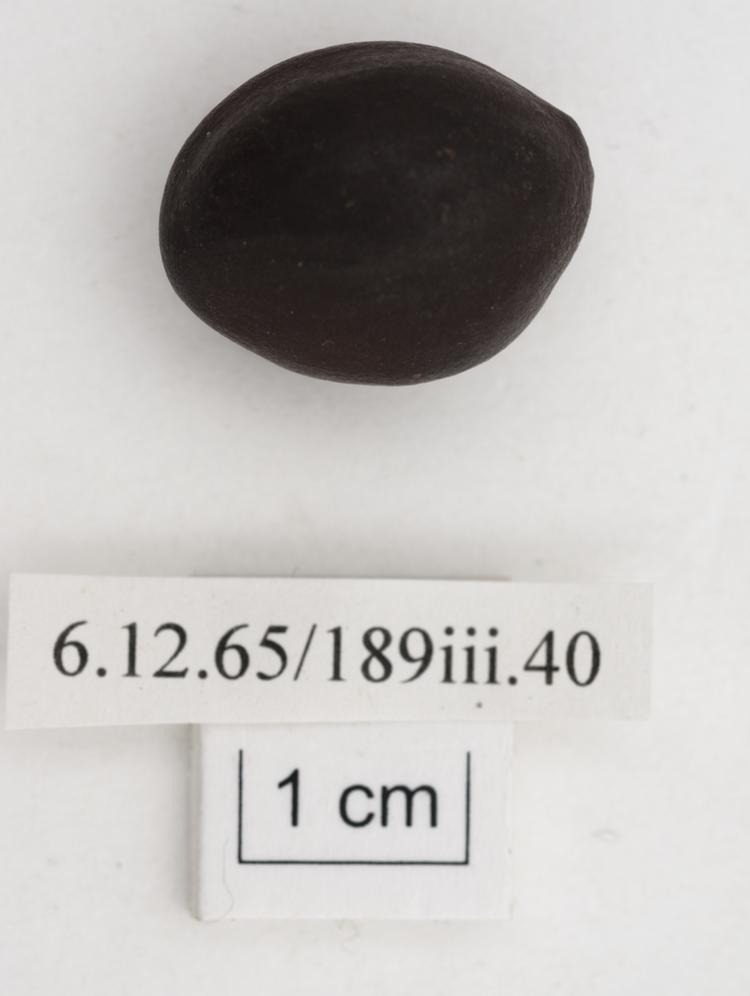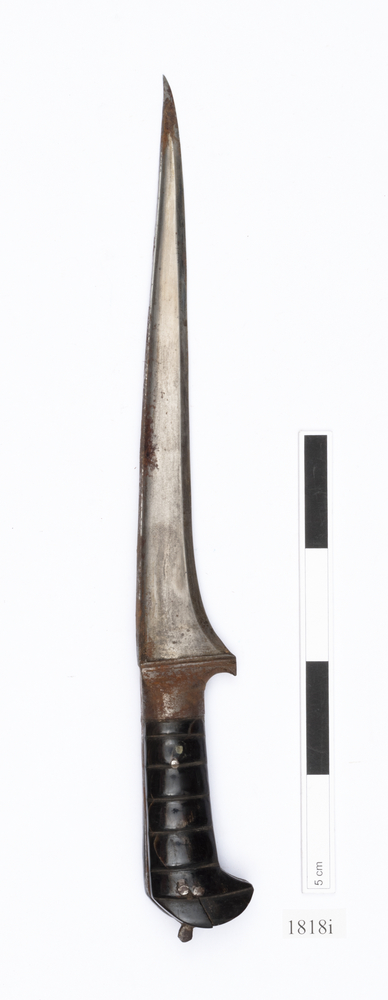Large canoe paddle carved with spade-shaped blade and cylindrical shaft. The blade is engraved with an elaborate motif incorporating hand, praying mantis claws, bird and tree-like elements and fretwork scrolls. The paddle terminates in two human figures widely separated, the uppermost of which has sustained significant damage to the limbs. A brass plaque has been screwed onto the blade (over engraving); it reads “Badminton HBS/RNN – HMS Mounts Bay, Hollandia NNG 160859.”
I’m not saying that it’s not Asmat – the little figure on the staff looks right, but the decoration on the paddle isn’t right somehow –it should be much more extensive over the body of the wood. The brass label is interesting again. This is the Wikipedia entry for the ship Mounts Bay was commissioned for service, and after sea trials and training she sailed to the Far East to join the 4th Frigate Flotilla. From 1950 to 1953 she was part of the United Nations Task Force based at Sasebo, Japan, with other Commonwealth warships in support of military operations in Korean waters, spending routine maintenance and rest periods at Kure, Japan. She was also deployed for Squadron duties, including patrols to protect British merchant ships trading between ports in China and the South China Sea. When not deployed off Korea she carried out patrols off Malayan coast in support of British anti-insurgent operations, and took part in Squadron and Fleet exercises and visits to ports in the Far East. After the Korean War armistice was signed on 27 July 1953, the UN Task Force operations continued, and Mounts Bay was deployed as a guardship into 1954. This only adds to the confusion as it’s clearly not a Dutch label. What was the ship doing there in Dutch colonial territory? And whose inventory number is this – Could it be an earlier Horniman class mark?






